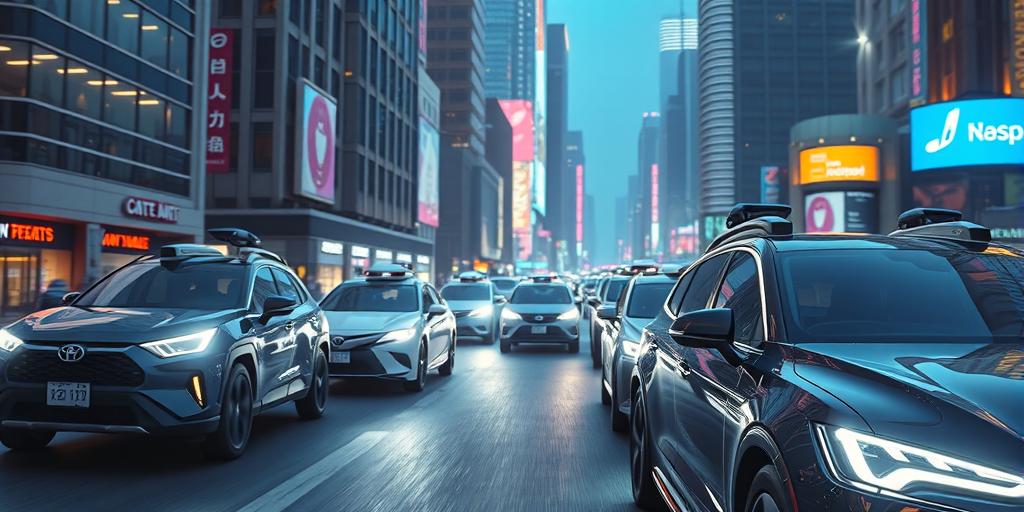What Does a Smart City Look Like in Practice?
Have you ever wondered what a truly smart city looks like? Forget science fiction – the future is here, and it’s more interconnected, efficient, and sustainable than you might imagine. This isn’t just about flashy gadgets; it’s a revolution in how we live, work, and interact with our urban environments. Prepare to be amazed as we delve into the practical applications of smart city technology and explore what makes a city truly intelligent. From cutting-edge transportation systems to eco-friendly energy solutions, the smart city revolution is transforming urban life as we know it!
Cutting-Edge Transportation Systems: The Arteries of a Smart City
Smart cities are reimagining transportation to ease congestion and boost sustainability. Think seamless integration of public transport, real-time traffic updates that intelligently reroute traffic flow, and the rise of electric vehicle charging stations conveniently located throughout the city. We’re not just talking about apps here, but sophisticated networks using sensors and data analytics to create a more efficient, responsive, and environmentally friendly urban transportation system. Imagine a city where your commute is predictable, less stressful, and contributes to a greener planet. This is the power of smart city transportation solutions.
Optimizing Traffic Flow with Smart Signals
Smart traffic signals analyze real-time traffic data to optimize signal timing, reducing congestion and improving journey times. This results in less fuel consumption, lower emissions, and a smoother flow of traffic. Imagine never again being stuck in a traffic jam because of poorly timed traffic lights! This is the promise of intelligent traffic management systems.
Seamless Public Transportation Integration
Smart city initiatives are often linked to improved public transport networks. This means better apps that offer real-time updates, integrated ticketing systems across different modes of transportation, and increased accessibility for people with disabilities. The goal? A comprehensive and user-friendly transportation ecosystem that makes opting for public transport a convenient and attractive option.
The Rise of Electric Vehicles and Charging Infrastructure
The widespread adoption of electric vehicles is crucial for reducing a city’s carbon footprint. Smart cities are actively developing charging infrastructure, making it easier for residents and visitors to embrace electric mobility. Conveniently located charging stations, smart charging technologies, and incentives for EV adoption are key features of a forward-thinking smart city’s transportation policy.
Intelligent Energy Management: Powering a Sustainable Future
Smart cities prioritize energy efficiency and the transition to renewable energy sources. This involves implementing smart grids that monitor energy consumption in real time, enabling the integration of renewable energy sources such as solar and wind power, and developing energy-efficient buildings and infrastructure. The goal is to create a more sustainable, resilient, and environmentally friendly urban environment. Reducing our reliance on fossil fuels and embracing green energy is a critical element of creating a smart city.
Smart Grids and Energy Efficiency
Smart grids use advanced sensors and data analytics to monitor energy consumption, identify inefficiencies, and optimize energy distribution. This improves energy efficiency and reduces costs for both individuals and the city as a whole. Imagine a future where your energy usage is automatically adjusted based on real-time demand and supply. This is the potential of smart grid technology.
Renewable Energy Integration
Smart cities actively integrate renewable energy sources into their power grid. This reduces reliance on fossil fuels, decreases carbon emissions, and promotes a cleaner environment. Think of cities powered by solar panels, wind turbines, and other renewable energy sources. This is the essence of sustainable energy management in a smart city.
Energy-Efficient Buildings and Infrastructure
Smart cities prioritize the development and retrofitting of energy-efficient buildings. This includes features such as smart thermostats, LED lighting, and improved insulation, resulting in significant energy savings. This commitment to sustainability extends to the entire urban infrastructure.
Smart City Data Management: Harnessing the Power of Information
The cornerstone of any truly smart city is its ability to collect, analyze, and utilize data effectively. Smart sensors, IoT devices, and advanced analytics play a crucial role in monitoring various aspects of urban life, from traffic flow to air quality. This data is then used to improve services, enhance public safety, and create a more efficient city. The ethical handling and use of this data is, however, critical. A truly smart city is one that handles data responsibly.
Real-time Monitoring and Predictive Analytics
Real-time data allows cities to monitor and address issues quickly and efficiently, while predictive analytics helps anticipate future problems and prevent them before they occur. Imagine a city where issues are addressed before they become problems. This is the promise of advanced data management.
Data-Driven Decision-Making
Smart city solutions depend on using data to inform policy and decision-making. This results in evidence-based planning and more effective resource allocation.
Citizen Engagement and Transparency
A smart city embraces transparency, and this includes involving citizens in decision-making processes. Citizen feedback and engagement are key to creating a truly livable and responsive urban environment.
Smart City Security and Safety: Protecting the Urban Ecosystem
Protecting citizens is paramount in any smart city. Smart city initiatives contribute to improved public safety through enhanced surveillance systems, optimized emergency response times, and improved communication channels. This commitment to security and safety is a defining characteristic of a responsible smart city.
Enhanced Surveillance and Crime Prevention
The use of intelligent cameras and sensors helps in monitoring public spaces and detecting unusual activity, contributing to a safer and more secure urban environment.
Optimized Emergency Response
Real-time data and predictive analytics allow emergency services to respond more effectively to incidents, reducing response times and ultimately saving lives.
Improved Communication Channels
Efficient communication systems facilitate prompt responses to emergencies and enhance the flow of important information between citizens and city officials.
Ready to build a smarter, more efficient, and sustainable future? Embrace the smart city revolution!













